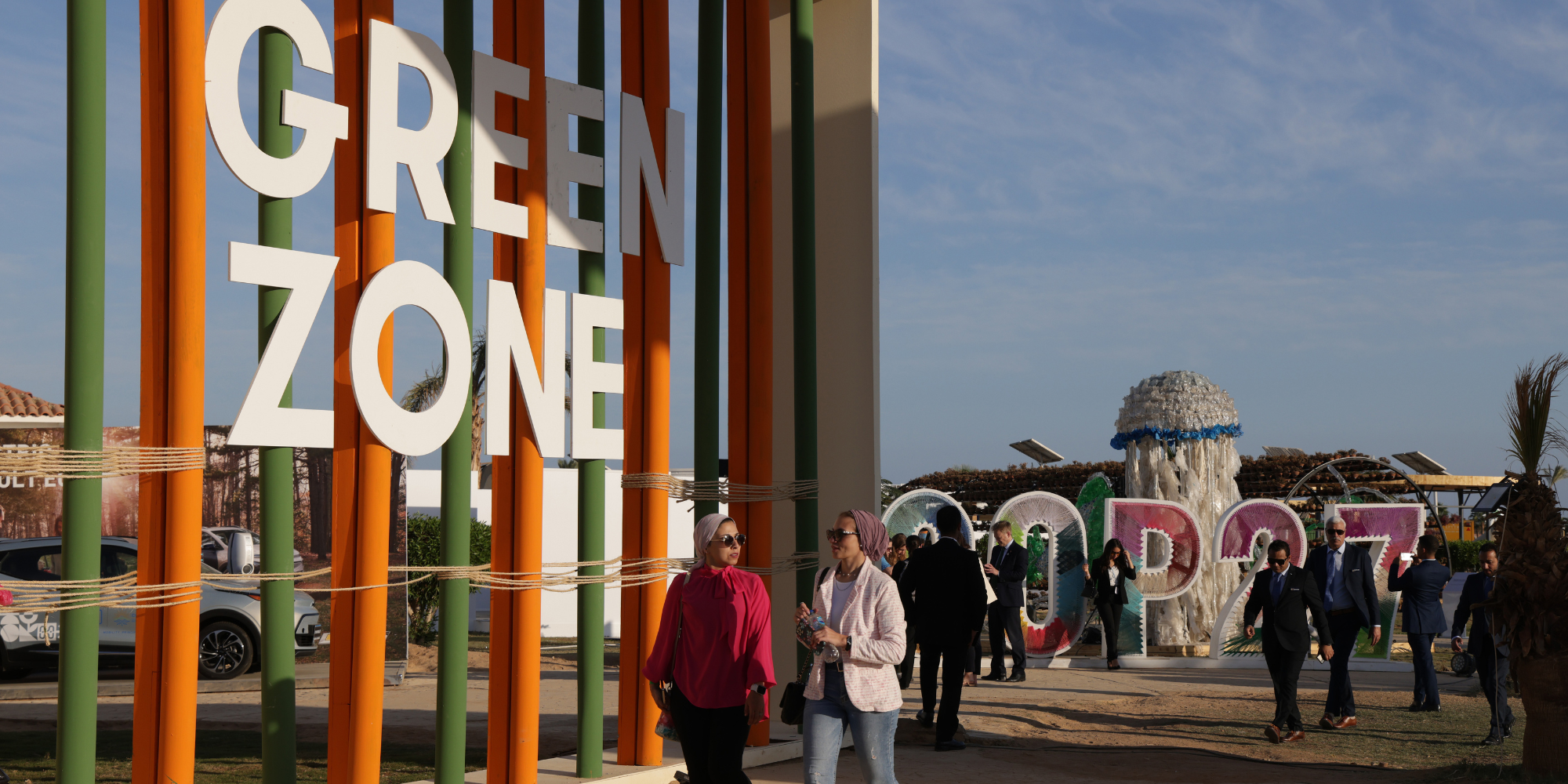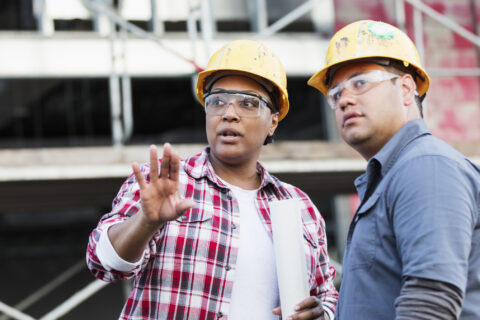Header Photo: SHARM EL SHEIKH, EGYPT – NOVEMBER 10: Visitors walk in the Green Zone of the UNFCCC COP27 climate conference on November 10, 2022 in Sharm El Sheikh, Egypt. (Photo by Sean Gallup/Getty Images)
The 27th United Nations Conference of the Parties of the UNFCCC (COP27) was hosted in Sharm El-Sheikh from November 6-18, 2022. During this two-week global conference, government leaders, NGOs, activists, and scientists from around the world convened to discuss, negotiate and advocate for agreements and next steps to take bold and collective action on climate change. At this convening with more than 35,000 people, many critical topics were discussed. Here is what city leaders need to know about the conference.
1. Cities Continue to be Strong Voices in the Global Conversation on Climate Action
Among subnational attendance at the global conference, 70 percent of the local government officials from the U.S. are from NLC member cities. U.S. cities are leading the way on climate change by taking the necessary steps to make real, transformative impacts in their community. Many NLC city leaders attended the conference and demonstrated leadership on climate action and the innovation of sustainability leaders at the city, town and village scale. Here are three mini-case studies on NLC member participation in the conference:
Mayor Errick Simmons, Greenville, MS, elevated the profile of nature-based solutions: Mayor Simmons centered the conversation on the impact of nature-based solutions as one critical component of resilient infrastructure investments in the U.S. During the conference, Mayor Simmons announced his city will be participating in a project along the Mississippi river corridor to utilize nature-based solutions to mitigate increased riverine flooding due to climate change. He also spoke on a panel on regional climate action, visited the Climate Justice Pavilion to discuss environmental justice in policy making, and met with global companies and members of the U.S. Congress.
Mayor Chris Rogers, Santa Rosa, CA, remembered past climate impact while looking ahead to a more resilient future: The impacts of climate change are acutely felt in Santa Rosa, CA. In 2017, this community was devastated by fires in which community members tragically lost their lives. Under Mayor Rogers’s leadership, the community is a beacon of hope on what it means to rebuild in a way that centers climate change and ensures a resilient future of the city. Looking at these climate impacts means not only looking at fire, but also acknowledging that drought has the potential to cause harm as well. As part of the solution to this challenge, Sonoma Water is initiating a project on capturing and storing water in local reservoirs. Additionally, Mayor Rodgers spoke on a panel with electricity supplier Sonoma Clean Power to discuss renewable energy investments and demonstrate partnership with the utility.
Mayor Elizabeth Kautz, Burnsville, MN, demonstrated bipartisan support for climate action in the U.S.: Mayor Kautz participated in several United States Conference of Mayors events at COP27. She spoke on critically important topics such as climate migration, equity-centered climate action and multi-level funding. Mayor Kautz is taking Burnsville’s local work on sustainability – from their recently updated Sustainability Plan to their Climate Adaptation Framework – to the global stage and demonstrating that cities are the places where these global commitments can really take root and have positive change on people’s lives.
2. Equity and Justice Were at the Center of the Conversation on Collective Climate Action
Many of the headlines coming out of COP27 are related to the agreement on developing a Loss and Damage Fund that will provide financial assistance to developing nations that are being impacted first and worst by climate change. The countries that contribute the most to the climate crisis through economic development are not the same counties that will be most impacted by global climate change. Thus, this fund was established to allow economically advantaged countries to contribute to payments for lower-income countries who need financial compensation to take climate action. While there is no agreement on how the financing will occur, for developing countries who have been advocating for this for decades, it’s a win.
Additionally, for the first time at a COP, there was a Climate Justice Pavilion. This pavilion was hosted by WE ACT for Environmental Justice, the Deep South Center for Environmental Justice, and the Bullard Center for Environmental and Climate Justice at Texas Southern University and was designed to elevate the voices and perspectives of residents who are not heard enough and who will be most impacted by the worsening impacts of climate change.
3. We are Not on Track to Meet Previously Negotiated Agreements, but it is Not Too Late to Do More
The 2015 Paris Climate Agreement successfully negotiated pursuing reducing greenhouse gas emissions by 50 percent by 2030 to hold global warming to 1.5ºC. Based on projections of current commitments from global countries, we are not on track to stay within the 1.5ºC limit. City leaders have a critically important role to play in ensuring that we take bold, transformative and near-term action to reduce emissions. While many cities across the country have committed to meeting the Paris Climate Agreement goals, there is a need for continued federal funding, partnership and national policies. The climate and clean energy investments from the Inflation Reduction Act are estimated to reduce greenhouse gas emissions by 40 percent by 2030.
4. Climate Finance is a Global Priority, and the U.S. is Leading the Way
Another core topic of COP27 was climate finance. While we still have a long way to go in financing and funding resilience and decarbonization projects, the U.S. has taken leaps and bounds this year with the passing of the Bipartisan Infrastructure Law (BIL) and the Inflation Reduction Act. BIL includes $1.2 trillion — $550 billion newly appropriated — worth of investments in America’s climate-vulnerable infrastructure. Many of these investments will flow to cities, towns and villages and will support city leaders in taking climate action. Additionally, the Inflation Reduction Act marks the largest federal investment in climate and clean energy. With a mix of federal funding and tax credits, the law includes a new mechanism for tax-exempt entities, such as cities, towns and villages, to take advantage of many of the new clean energy tax incentives included in the law.
5. NLC is Here to Support City Leaders in Taking Climate Action at Home
NLC’s Climate and Sustainability Program works with communities across the country to bolster and grow a healthy ecosystem of practitioners – elected leaders, city staff members and front-line communities – who collectively support resilience, equity and sustainability at the city, town and village scale. Our team puts people first and prioritizes systems transformation through climate and sustainability action. We see cities as places of innovation to build sustainable communities and we provide practitioners with direct hands-on assistance, training, resources, case studies, best practices, and peer-learning opportunities. To learn more about our work, please reach out to the Sustainability Program Director, Peyton Siler Jones.









